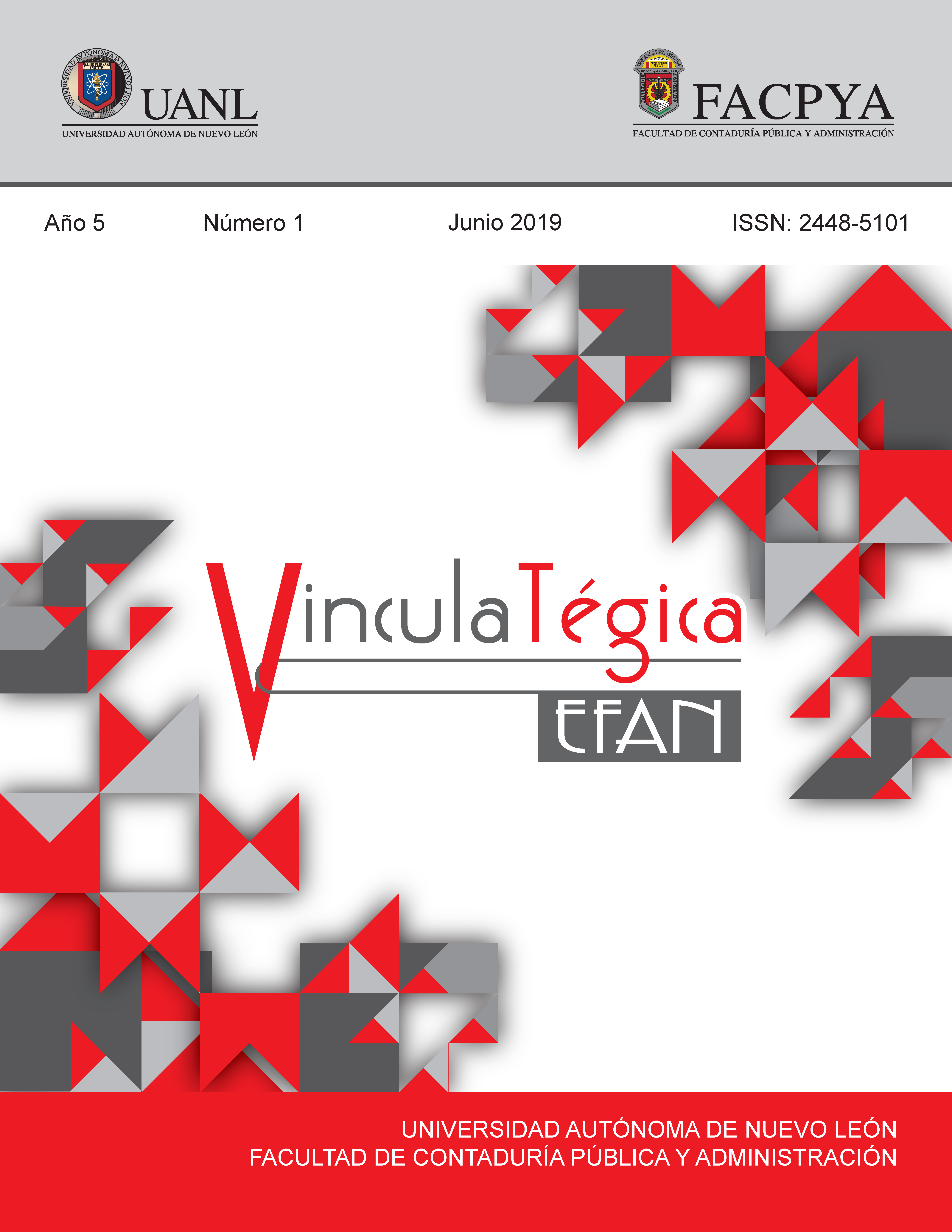Factores que inciden en la evasión del impuesto sobre honorarios en Tamaulipas
DOI:
https://doi.org/10.29105/vtga5.1-773Keywords:
evasión, transferencias, federalismoAbstract
The evasion of taxes in the Federal Entities has been a constant of Mexican Fiscal federalism, federal resources that the central government sends to the entities constitute most of its income in a proportion or 80 %. The Congress of the Union proposed that the federal entities will establish scheduler taxes to generate an additional source or income, helping them to reduce their dependence on transfers. This work has as purpose to identify the factors that affect the evasion of the scheduler taxes collected in the State of Tamaulipas. A multiple linear regression model is presented in a period from 2008 to 2016. It was found that the tax evasion is explained by the variation in the population economically active, and inversely by the federal tax collection efficiency. The foregoing demonstrates the need for a adjustment in the taxpayer registry.
Downloads
References
Allingham, M. (1972). Income Tax Evasion: a Theoretical Analysis. Journal of Public Economics vol 1 Elsevier, 323-338.
Barragán, C. G. (2012). Cemtro de Investigación Económica y Presupuestaria.
Bonet, J. (2011). Esfuerzo fiscal en los estados mexicanos . Banco internamericano de desarrollo.
Cominetti, R. (1994). Ajuste fiscal y gasto social. CEPAL,54, 47-60.
Cosulich, J. (1993). La evasión Tributaria. CEPAL/PNUD.
Oz, G., Gumus,E. (2013). Determinants of Tax Evasion Behavior; Empirical Evidence form Survey Data . International Business and Management, 15-23. DOI: 10.3968/j.ibm.1923842820130602.1085.
Hernández, A. (2016). El control interno contable y fiscal como medida para contribuir a la maximizacion de los resultados financieros en los negocios. Innovaciones de Negocios, 047-069.
Sampaio Doria, A. R. (1971). La evasión Fiscal.V asamblea general del CIAT
Sandmo, M. G. (1972). Income Tax Evasion: a theoretical analysis. The Norwegian School of Economics and Business Administration, Bergen, Norway, 323-338. DOI: https://doi.org/10.1016/0047-2727(72)90010-2
Tanzi, Vito & Shome. (1993). La globalización y la acción de las termitas fiscales. Finanzas & desarrollo, 34-37.
Paura, J., & Venzor, I. &. (2016). Efectos de los indicadores económicos en la recaudación fiscal federal: PIB, Inflación, tipo de cambio. VinculaTégica EFAN, 176-198
Spicer, M. y. (1980). Fiscal Inequity and Tax Evasion: An experimental Approach. National Tax Journal, 171-175. DOI: https://doi.org/10.1086/NTJ41862299
Colín, R. (2018). Generalidades sobre los Impuestos Cedulares. México: SAT.
Cominetti, R. (1994). Ajuste fiscal y gasto social. CEPAL, 54, 47-60. DOI: https://doi.org/10.18356/434e2aac-es
Cullis, J. G. (1997). Why People Pay Taxes: fron a Conventional Economic Model to a Model of Social Convention. Journal of Economic Psychology, 18, 305-321. DOI: https://doi.org/10.1016/S0167-4870(97)00010-X
Quintero, J. M. (2012). Evolución de los Impuestos Cedulares. Centro de Estudios de las Finanzas Públicas.
Thurman, Q. C. (1991). Taxpayer Nonompliance and General Prevention. Public Finance, 411-438.
Vogel, J. (1974). Taxation and public opinion in Sweden; an interpretarion of recent survey data. National Tax Journal, 27, 499-515. DOI: https://doi.org/10.1086/NTJ41861983
Smith, A. (1979). Investigación sobre la naturaleza y causas de la riqueza de las naciones. México: Fondo de Cultura Económica
Downloads
Published
How to Cite
Issue
Section
License

This work is licensed under a Creative Commons Attribution 4.0 International License.
a). Authors keep copyright and give the journal the right of the first publication of the work under a Creative Commons attribution license. This license allows others to share the work as long as original authorship and initial publication in this journal is acknowledged.
b). Authors may make other independent and additional contractual agreements for the non-exclusive distribution of the version of the article published in this journal (e.g., include it in an institutional repository or publish it in a book) as long as they clearly indicate that the work was published for the first time in this journal.







